Adoptable storage: second life for Android devices
Since the very first public appearance of the OS Android on the market, its development history has been inextricably linked with memory cards. Years passed, Android acquired new features, services, and capabilities, and the attitude of OS developers to expandable memory changed almost every year. And now, it seems, a balance has been found in the form of the Adoptable storage option, available with Android Marshmallow or 6.0.

In the very first versions 1.5-1.6, the modest storage role for media content was assigned to the memory card, and there was no question of transferring part of the system or applications there. As time went on, the application store grew exponentially, and it became obvious that the amount of ROM in the devices became clearly small, and then in 2010, along with the release of Android 2.2 Froyo, users were given the cherished opportunity to transfer applications to a memory card.
 To fully understand the essence of the transfer process, it is necessary to clarify that applications can be built in two different ways. The first one assumes that the application and data are one. This approach is usually used in most programs. In the second, the principle of "application separately - data separately." This is done for games and content access services with various kinds of subscription protection, when at a size of 100 megabytes, data in the form of textures or resources can take up to several gigabytes.
To fully understand the essence of the transfer process, it is necessary to clarify that applications can be built in two different ways. The first one assumes that the application and data are one. This approach is usually used in most programs. In the second, the principle of "application separately - data separately." This is done for games and content access services with various kinds of subscription protection, when at a size of 100 megabytes, data in the form of textures or resources can take up to several gigabytes.
')
So in Android 2.2, the same button made it possible to transfer application data, but only where the developers have foreseen it. The method was not perfect, but saved a decent amount of memory. Meanwhile, at the time of the appearance of Android 2.3, all progressive users simply got root, set up a well-known Titanium backup for everyone, and with its help transferred applications entirely. The exception to this was made only by applications with widgets - they simply did not tolerate the transfer.

With the release of Android 4.X and an even greater flourishing of devices on the MTK chipmaker platform, the default write disc option became popular, which, in fact, interfered with the system work with memory and allowed to put applications at once and completely on the memory card. Of course, the option was very popular with users.
The debugged mechanism, as well as an alternative loophole for enthusiasts, has complicated the new turn in the development of Android. With the advent of Android 5, or Lollipop, with an incredibly beautiful Material design, working with a memory card for many aspects was seriously hampered. Even just a complete transfer of data in the form as it was before, did not always happen, and the same games kept part of the files in one memory, and some in the other. Thus, users are encouraged to use expandable memory only for storing multimedia content. Against this background, a lot of collisions happened, because even the official Google applications sometimes did not know how to work with transferring data to a memory card.
This task could be solved by advanced users through Root rights and editing the configuration file, but by that time many manufacturers had already acquired mechanisms for detecting tampering with the software and equated it with a loss of warranty, which is not devoid of meaning. Thus, the owners of flagships 2014-2015, for example, Samsung Galaxy Note 4 or LG G4, had to get used to the new realities due to the complete absence of alternatives.

The official or close to that explanation of such a move was built on the fact that, first, the data on the memory card was stored without encryption, which is dangerous, and secondly, the use of low-quality memory cards that were abundant in the market could not only lead to data loss, but also seriously affect the performance of the device.
Of course, such a move caused a storm of indignation, because memory cards of 128-256 GB with a relatively humane price were already widely available, and the very possibility of expanding memory was a tangible competitive advantage over the "fruit company."
With the release of the current version of Android 6 (Marshmallow), the team responsible for developing Android finally managed to find a balance between completely eliminating the capabilities of the memory card and the problems they were trying to deal with.
So, we got to the point. The Adoptable storage function retains the ability to use a memory card in a limited mode, as it was before, and also allows the user to make a single array from the memory card and the device's ROM. Due to the fact that there are no memory cards in the Nexus 5X and 6P, the HTC One A9 was the very first with this option, and later it was received last year’s flagship HTC One M9 .

The ability to customize the mode of the memory card appears immediately, as soon as the system “sees” it, and it does not matter whether it happens during the first start or much later. When choosing the option of using “Internal memory”, the phone first formats the memory card, and then virtually connects it to the system.
Important! The data that was on the memory card “before” will disappear forever, so save it in advance.
After successful formatting and logical combining, the phone will offer to transfer multimedia data (photos, images, music, and so on) to that part of the memory that belongs to the memory card. It is worth choosing a permanent transfer and wait a few minutes, as the process is accompanied by some limitations in the work of Android.
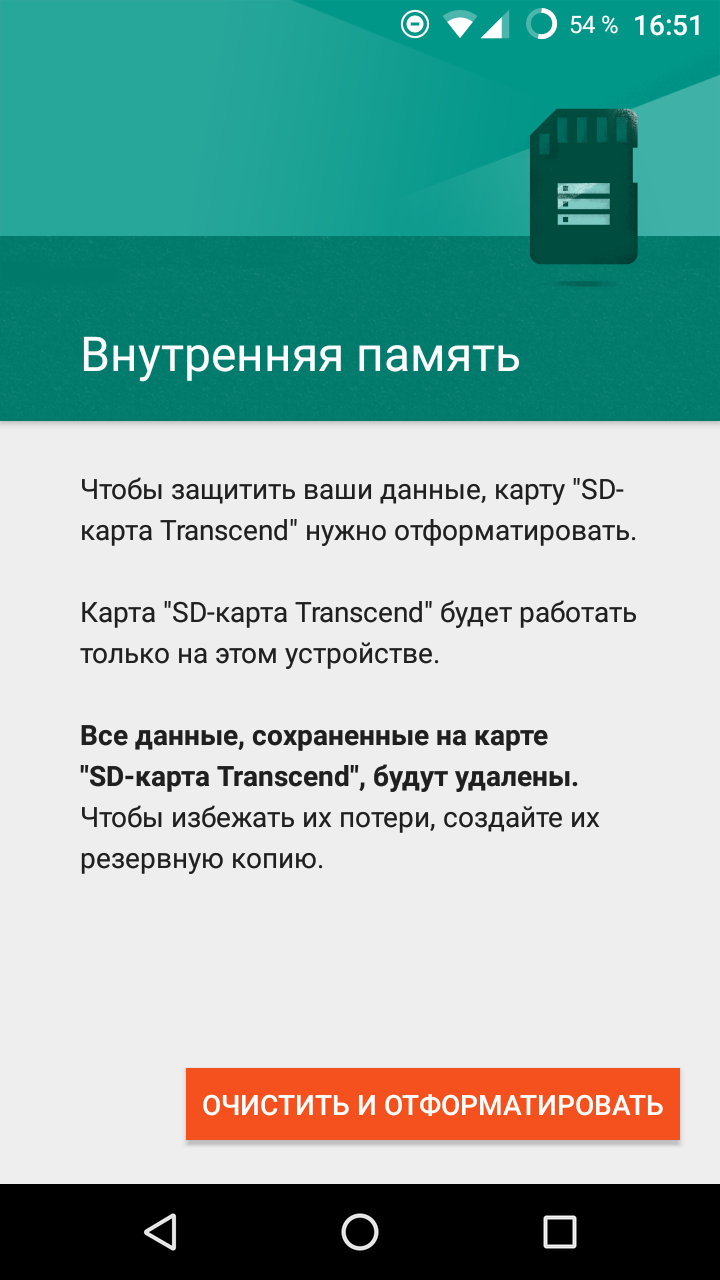

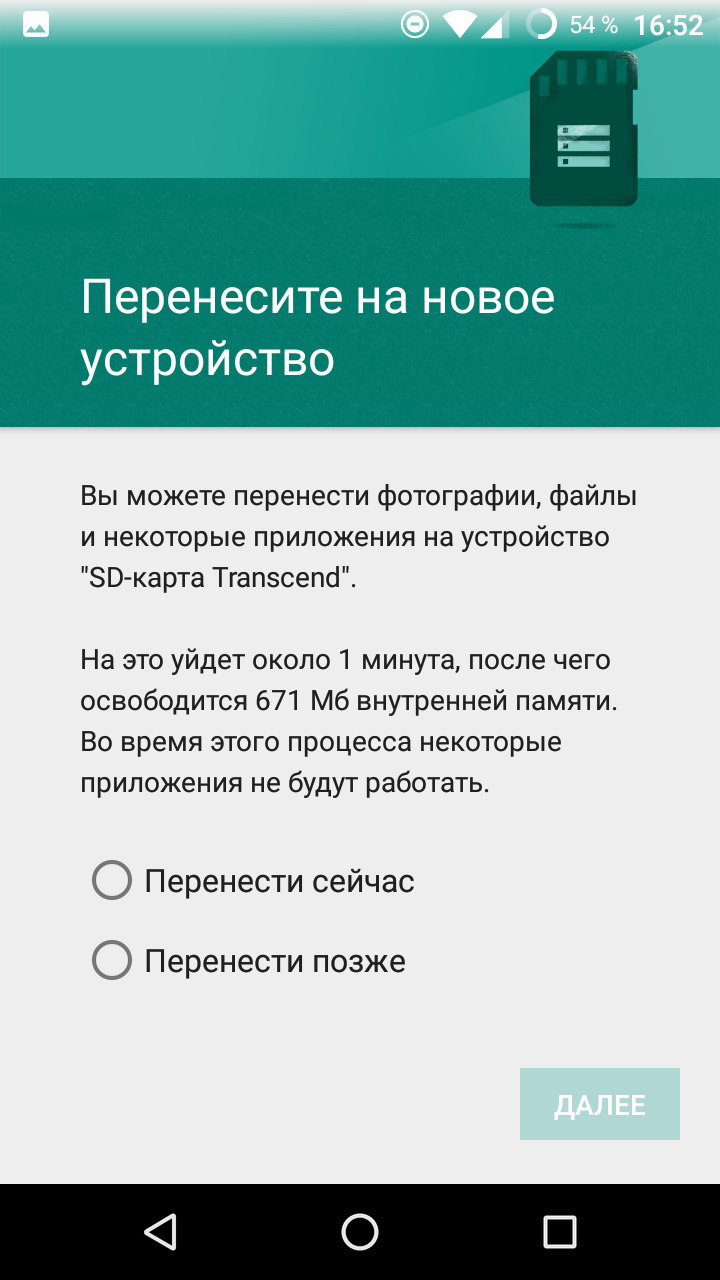
According to the description, the system should decide for itself where to put the applications, but manually checking back will not be superfluous.
For the test, we will choose two applications (games), each of which contains both the executable and a large amount of additional resources, and also check how fully a small application can be transferred.
So, download Asphalt 8 and launch it so that the game can download 830 megabytes of textures and other data. After that, it is not even necessary to start the game itself, in the “Storage” section you will already see statistics on memory allocation: the game will be completely in the phone’s memory. Now we go to the configuration of the internal storage and select the movement to the memory card, after which we again look at the statistics of the memory allocation. As before installing the game, 2.89 GB is occupied in the device’s memory, and in the details of the game it is clearly stated that the file itself and the data “moved” to the memory card.
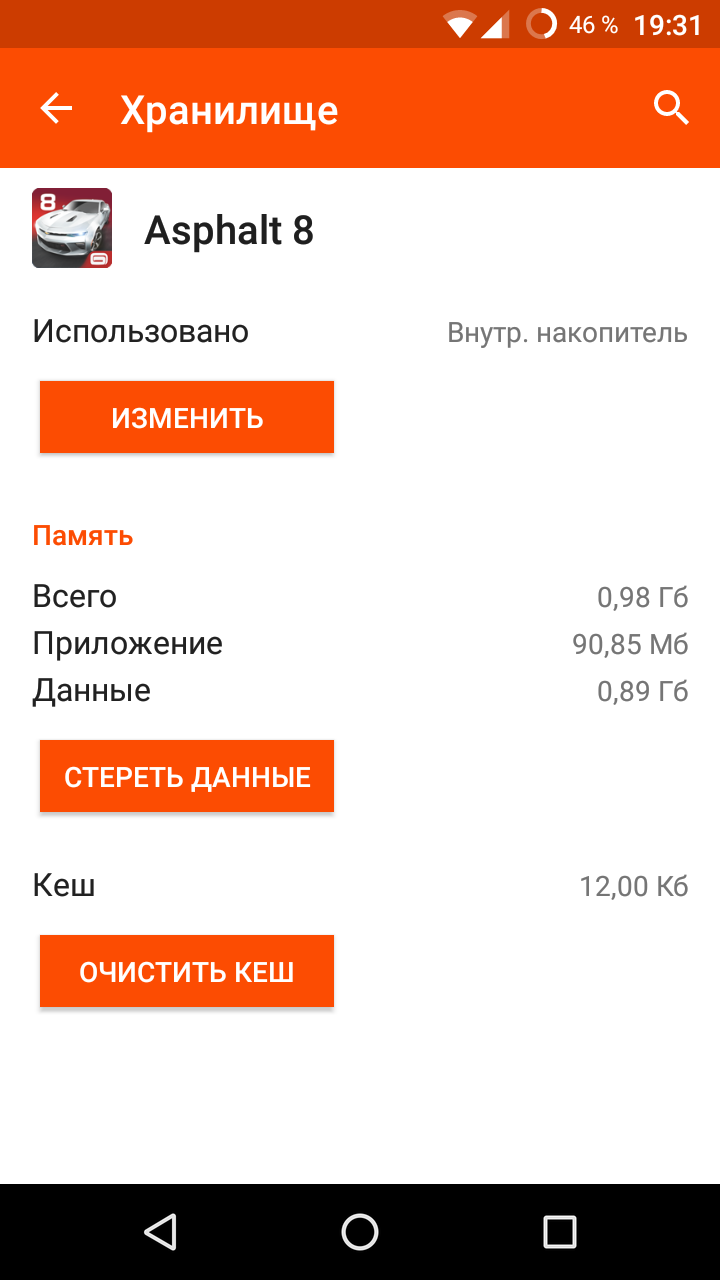
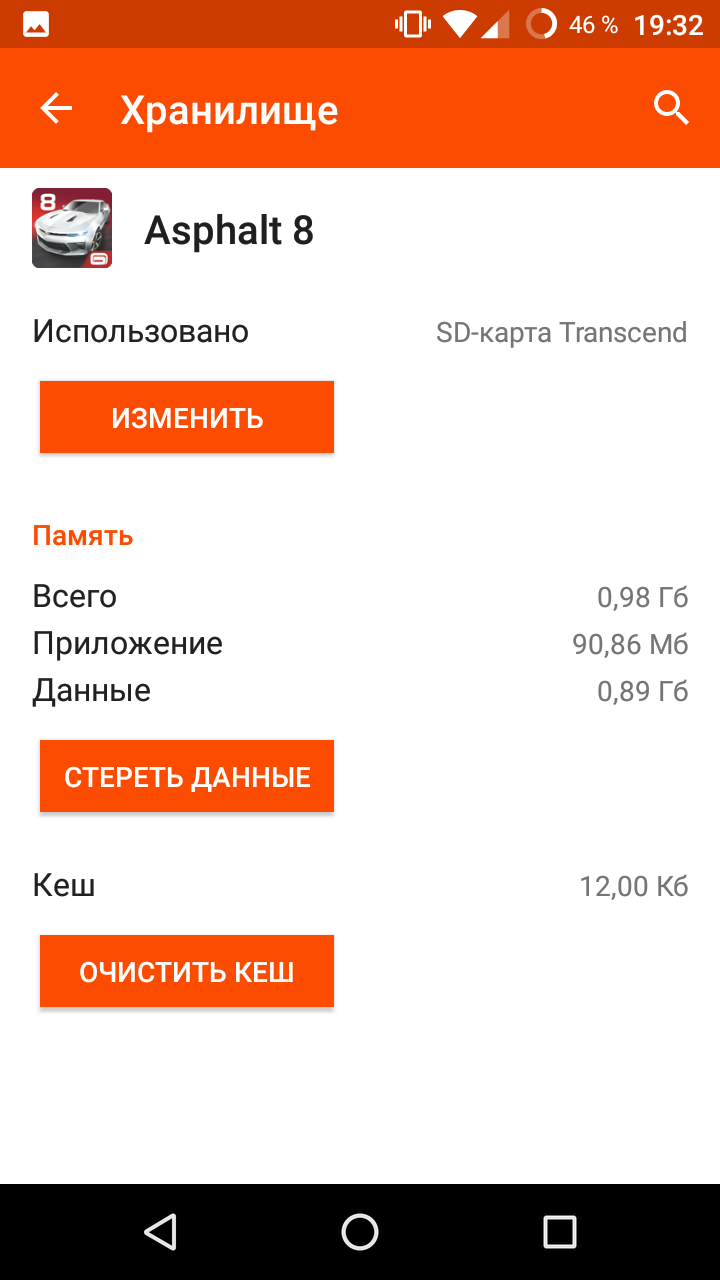
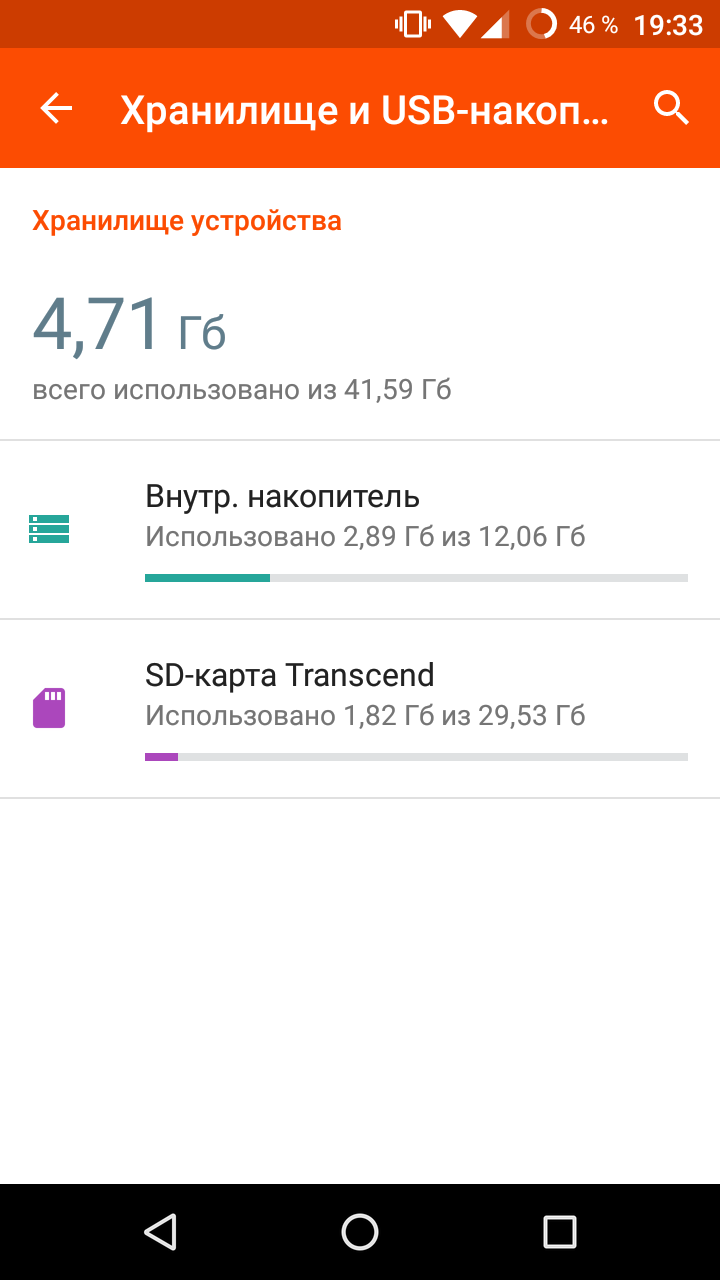
Let's repeat the experiment with another game, the developer of which stores additional files directly on the side of the Google store. Download and install Reckless Racing 3 and repeat the same steps. Once again, the application is stored in the phone’s memory, and again after moving to the device’s memory, 2.89 GB are occupied.



After the manipulation of the game were launched without any problems with performance.
As a final stage of the experiment, we try to transfer a simple and easy Facebook Messenger.


And this application is also completely transferred to the memory card. Hooray? Hooray!
The option certainly offers a very useful and convenient feature, especially after what was done in Android 5.
Flagships with very fast memory, as a rule, have a decent amount of ROM, and manufacturers, realizing this, are already removing this function. But for the medium and low-end segments, Adoptable storage support will be able to solve the frequent problem of lack of space when installing more than X applications.
Low-cost devices with the latest version of Android today are becoming more and more, but at the same time the need for cloud-based data copying is growing, and this should not be neglected

In the very first versions 1.5-1.6, the modest storage role for media content was assigned to the memory card, and there was no question of transferring part of the system or applications there. As time went on, the application store grew exponentially, and it became obvious that the amount of ROM in the devices became clearly small, and then in 2010, along with the release of Android 2.2 Froyo, users were given the cherished opportunity to transfer applications to a memory card.
 To fully understand the essence of the transfer process, it is necessary to clarify that applications can be built in two different ways. The first one assumes that the application and data are one. This approach is usually used in most programs. In the second, the principle of "application separately - data separately." This is done for games and content access services with various kinds of subscription protection, when at a size of 100 megabytes, data in the form of textures or resources can take up to several gigabytes.
To fully understand the essence of the transfer process, it is necessary to clarify that applications can be built in two different ways. The first one assumes that the application and data are one. This approach is usually used in most programs. In the second, the principle of "application separately - data separately." This is done for games and content access services with various kinds of subscription protection, when at a size of 100 megabytes, data in the form of textures or resources can take up to several gigabytes.')
So in Android 2.2, the same button made it possible to transfer application data, but only where the developers have foreseen it. The method was not perfect, but saved a decent amount of memory. Meanwhile, at the time of the appearance of Android 2.3, all progressive users simply got root, set up a well-known Titanium backup for everyone, and with its help transferred applications entirely. The exception to this was made only by applications with widgets - they simply did not tolerate the transfer.

With the release of Android 4.X and an even greater flourishing of devices on the MTK chipmaker platform, the default write disc option became popular, which, in fact, interfered with the system work with memory and allowed to put applications at once and completely on the memory card. Of course, the option was very popular with users.
The debugged mechanism, as well as an alternative loophole for enthusiasts, has complicated the new turn in the development of Android. With the advent of Android 5, or Lollipop, with an incredibly beautiful Material design, working with a memory card for many aspects was seriously hampered. Even just a complete transfer of data in the form as it was before, did not always happen, and the same games kept part of the files in one memory, and some in the other. Thus, users are encouraged to use expandable memory only for storing multimedia content. Against this background, a lot of collisions happened, because even the official Google applications sometimes did not know how to work with transferring data to a memory card.
This task could be solved by advanced users through Root rights and editing the configuration file, but by that time many manufacturers had already acquired mechanisms for detecting tampering with the software and equated it with a loss of warranty, which is not devoid of meaning. Thus, the owners of flagships 2014-2015, for example, Samsung Galaxy Note 4 or LG G4, had to get used to the new realities due to the complete absence of alternatives.

The official or close to that explanation of such a move was built on the fact that, first, the data on the memory card was stored without encryption, which is dangerous, and secondly, the use of low-quality memory cards that were abundant in the market could not only lead to data loss, but also seriously affect the performance of the device.
Of course, such a move caused a storm of indignation, because memory cards of 128-256 GB with a relatively humane price were already widely available, and the very possibility of expanding memory was a tangible competitive advantage over the "fruit company."
With the release of the current version of Android 6 (Marshmallow), the team responsible for developing Android finally managed to find a balance between completely eliminating the capabilities of the memory card and the problems they were trying to deal with.
So, we got to the point. The Adoptable storage function retains the ability to use a memory card in a limited mode, as it was before, and also allows the user to make a single array from the memory card and the device's ROM. Due to the fact that there are no memory cards in the Nexus 5X and 6P, the HTC One A9 was the very first with this option, and later it was received last year’s flagship HTC One M9 .

Where to looking for?
The ability to customize the mode of the memory card appears immediately, as soon as the system “sees” it, and it does not matter whether it happens during the first start or much later. When choosing the option of using “Internal memory”, the phone first formats the memory card, and then virtually connects it to the system.
Important! The data that was on the memory card “before” will disappear forever, so save it in advance.
After successful formatting and logical combining, the phone will offer to transfer multimedia data (photos, images, music, and so on) to that part of the memory that belongs to the memory card. It is worth choosing a permanent transfer and wait a few minutes, as the process is accompanied by some limitations in the work of Android.



According to the description, the system should decide for itself where to put the applications, but manually checking back will not be superfluous.
Experiment
For the test, we will choose two applications (games), each of which contains both the executable and a large amount of additional resources, and also check how fully a small application can be transferred.
So, download Asphalt 8 and launch it so that the game can download 830 megabytes of textures and other data. After that, it is not even necessary to start the game itself, in the “Storage” section you will already see statistics on memory allocation: the game will be completely in the phone’s memory. Now we go to the configuration of the internal storage and select the movement to the memory card, after which we again look at the statistics of the memory allocation. As before installing the game, 2.89 GB is occupied in the device’s memory, and in the details of the game it is clearly stated that the file itself and the data “moved” to the memory card.



Let's repeat the experiment with another game, the developer of which stores additional files directly on the side of the Google store. Download and install Reckless Racing 3 and repeat the same steps. Once again, the application is stored in the phone’s memory, and again after moving to the device’s memory, 2.89 GB are occupied.



After the manipulation of the game were launched without any problems with performance.
As a final stage of the experiment, we try to transfer a simple and easy Facebook Messenger.


And this application is also completely transferred to the memory card. Hooray? Hooray!
Special features
- When the combined memory and connection to the PC / MAC will be visible only one drive, and this is normal, because the logical partition is also one.
- You should not be tempted by the memory cards with AliExpress for two dollars: the system will swear at them during the transfer, warning of possible problems, among which may be a decrease in the performance of the device, and the loss of applications when the phone is restarted. In addition, the memory card as a whole is still inferior to top solutions, such as the UFS 2.0 in the Samsung Galaxy S7 / S 7 EDGE.
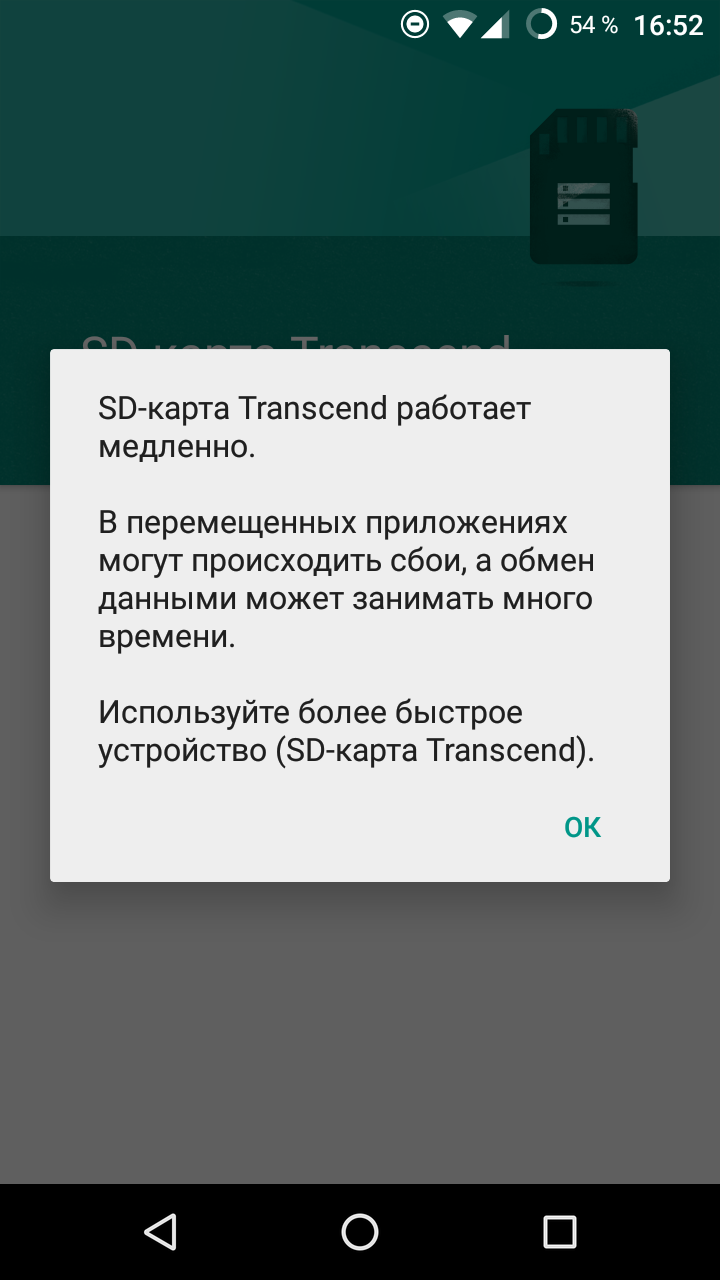
- A memory card in this mode is formatted before merging (do not forget to save data!) And is encrypted by default. It will not allow to use it in another phone or device in as-is mode, only after the next formatting.

- Resetting the phone with such a memory card to the factory settings will again lead us to formatting the seemingly already native card, since the phone refuses to read old content from it. Therefore, if we perform a memory merge, then only with a configured backup of all that is needed in the cloud. And this is not a joke.
Summarizing
The option certainly offers a very useful and convenient feature, especially after what was done in Android 5.
Flagships with very fast memory, as a rule, have a decent amount of ROM, and manufacturers, realizing this, are already removing this function. But for the medium and low-end segments, Adoptable storage support will be able to solve the frequent problem of lack of space when installing more than X applications.
Low-cost devices with the latest version of Android today are becoming more and more, but at the same time the need for cloud-based data copying is growing, and this should not be neglected

Source: https://habr.com/ru/post/393755/
All Articles